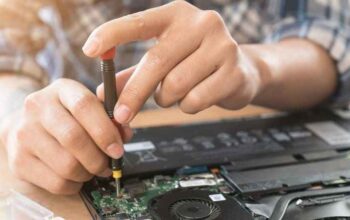In the ever-evolving landscape of technology, the debate between server hardware and software’s importance remains a hot topic among IT professionals and businesses. When it comes to optimizing server performance, reliability, and scalability, the choice between investing in top-notch hardware or robust software solutions can be challenging. In this we will delve deep into the Server Hardware vs. Software dilemma, exploring their respective roles, benefits, and how they work in tandem to ensure your server infrastructure is optimized for success.
Looking for Servers?
Buy Server Online at Server Store, a branch of Comprint Tech Solutions. Our distinguished Platinum Partner alliance with HPE Servers and our esteemed position as a top-tier partner of Dell Servers are sources of immense pride. Secure your server acquisition today!
The Role of Server Hardware
Server hardware refers to the physical components that comprise a server, including processors, memory, storage devices, and network interfaces. These components are the backbone of any server infrastructure and play a crucial role in determining the server’s performance and reliability.
Performance
One of the most significant advantages of investing in high-quality server hardware is improved performance. Powerful processors and ample memory allow servers to handle resource-intensive tasks with ease. This is especially important for businesses that rely on servers to run applications, websites, or databases that require quick response times and minimal latency.
Reliability
Reliability is another critical aspect of server hardware. High-quality hardware components are less prone to failure, ensuring that your server stays operational even under heavy workloads. Redundant power supplies, multiple cooling systems, and fault-tolerant storage solutions can further enhance server reliability.
Scalability
Scalability is the ability to expand server resources to accommodate increased workloads. Investing in server hardware that allows for easy scalability, such as modular components or expansion slots, can save you money in the long run. It enables your server infrastructure to grow alongside your business needs without requiring a complete overhaul.
Security
Security is a paramount concern in the digital age, and server hardware plays a role in safeguarding your data. Some server hardware features, like hardware-based encryption or trusted platform modules (TPMs), can provide an additional layer of security to protect sensitive information from cyber threats.
Energy Efficiency
Efficiency matters not only for environmental reasons but also for cost savings. Modern server hardware often comes with energy-efficient features that reduce power consumption, resulting in lower operational costs over time.
The Role of Server Software
While server hardware provides the foundation, server software is the brain and soul of your server infrastructure. Server software encompasses the operating system, applications, and middleware that run on the hardware.
Resource Management
Server software plays a crucial role in resource management. It allocates CPU, memory, and storage resources to applications and processes, ensuring that they run efficiently without overloading the server. Resource management software, such as virtualization solutions, enables the efficient use of hardware resources by creating virtual servers or containers.
Security
Server software is also instrumental in maintaining the security of your server. It includes firewalls, intrusion detection systems, and antivirus software that protect your server from external threats. Regular software updates and patches are essential to address vulnerabilities and keep your server secure.
Application Support
The software you choose for your server determines its ability to support specific applications and workloads. Different server operating systems and software platforms are better suited for certain tasks. For example, Linux is popular for web servers, while Windows Server is commonly used for enterprise applications.
Flexibility
Server software provides the flexibility to customize and configure your server environment according to your specific needs. You can install and configure software applications, set up user permissions, and tailor the server’s behavior to meet your business requirements.
Virtualization
Server virtualization software, such as VMware, Hyper-V, or KVM, allows you to create multiple virtual servers on a single physical server. This enhances resource utilization and simplifies server management, making it easier to scale your infrastructure.
The Symbiotic Relationship
Rather than viewing server hardware and software as competitors, it’s essential to understand that they complement each other. The best server infrastructure is one where hardware and software work together seamlessly to achieve optimal performance, reliability, and scalability.
Hardware and Software Optimization
To achieve the best results, it’s crucial to optimize both your hardware and software. This involves selecting hardware components that match your software’s requirements and configuring your software to make the most of the available hardware resources. For example, if you’re running virtualization software, ensure that your hardware supports hardware-assisted virtualization features.
Monitoring and Maintenance
Regular monitoring and maintenance of both hardware and software are essential to ensure they continue to perform at their best. Monitoring tools can help you identify hardware bottlenecks, software issues, and security threats. Routine updates and patches should be applied to both hardware firmware and software applications to keep them secure and up to date.
Scalability Planning
When planning for server scalability, consider both hardware and software aspects. Invest in hardware that can accommodate future growth, but also ensure that your software is designed to scale efficiently. Virtualization and containerization technologies can help you add new resources and applications without disrupting existing services.
Redundancy and Failover
To enhance server reliability, implement redundancy at both the hardware and software levels. Redundant power supplies, RAID configurations, and backup systems at the hardware level can prevent downtime due to hardware failures. At the software level, clustering and load balancing solutions can ensure high availability and failover capabilities.
Conclusion
In the debate of Server Hardware vs. Software, it’s evident that both play indispensable roles in creating a robust and efficient server infrastructure. Hardware provides the foundation, delivering performance, reliability, and scalability, while software governs resource management, security, and flexibility.
To make the right choices for your business, it’s essential to consider your specific needs and goals. Evaluate your workloads, applications, and budget constraints carefully. Often, the ideal solution lies in finding the right balance between hardware and software investments to create a server infrastructure that meets your performance, reliability, and scalability requirements while remaining cost-effective and secure. By recognizing the symbiotic relationship between server hardware and software, you can pave the way for a successful and future-proof IT environment.
Laptop Repair Made Easy: The Complete Guide for Beginners to Experts





